
The Serie A, officially known as Serie A TIM for sponsorship reasons, is a professional league competition for football clubs located at the top of the Italian football league system. The winners are awarded the Coppa Campioni d'Italia trophy and the scudetto, a decoration that they wear on the jersey the season after the victory. It has been operating as a round-robin tournament for over ninety years since the 1929–30 season. It had been organized by the Direttorio Divisioni Superiori until 1943, the Lega Calcio until 2010, and the Lega Serie A ever since. Serie A is regarded as one of the best football leagues in the world and it is often depicted as the most tactical and defensively sound national league. Serie A was the world's strongest national league in 2020 according to IFFHS, and is ranked third among European leagues according to UEFA's league coefficient – behind the Premier League and La Liga, and ahead of Bundesliga and Ligue 1 – which is based on the performance of Italian clubs in the Champions League and the Europa League during the previous five years. Serie A led the UEFA ranking from 1986 to 1988 and from 1990 to 1999.
The Italian football league system, also known as the Italian football pyramid, refers to the hierarchically interconnected league system for association football in Italy. It consists of nine national and regional tournaments, the first three being professional, while the remaining six are amateur, set up by the Italian Football Federation. One team from San Marino also competes. The system has a hierarchical format with promotion and relegation between leagues at different levels.
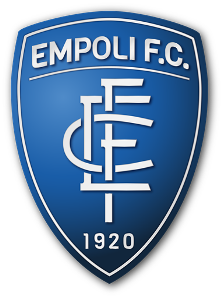
Empoli Football Club, commonly referred to as Empoli, is an Italian football club based in Empoli, Metropolitan City of Florence. Founded in 1920, the side is part of a select group of Italian football clubs not based in a provincial capital city that have participated in Serie A.

The Italy women's national football team has represented Italy in international women's football since their inception in 1968. The team is controlled by the Italian Football Federation (FIGC), the governing body for football in Italy.
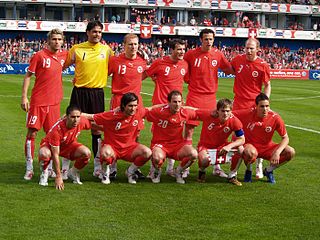
Football is the most popular sport in Switzerland. The Swiss Football Association was formed in 1895 and was a founder member of the sport's international governing body FIFA in 1904. The Swiss cities of Zürich and Nyon are home to FIFA and the European governing body UEFA respectively. The country played host to the 1954 World Cup and 2008 European Championship.
Pamela Conti is an Italian football manager and former player who coaches the Venezuela women's national team. As a player she was an attacking midfielder or striker for clubs in Serie A, Spain, Russia, the United States and Sweden, as well as for the Italy national team. She won two Italian Leagues, four Italian Cups, one Spanish Cup and one Russian League, and she represented Italy at two European Championships.

Società Sportiva Dilettantistica Brescia Calcio Femminile, known as Brescia Calcio Femminile or simply Brescia, is an Italian women's football club from Capriolo, near Brescia. It was founded in 1985 as FCF Capriolo Arredamenti Ostilio. In 2000 it moved to Bergamo, where it played for five seasons as ACF Pro Bergamo. The team was renamed in 2005 as it returned to Capriolo. Though sharing similar colours and logos with the men's team in the city, Brescia Calcio, the women's team is not a subordinate of it; however, in 2020 a formal partnership agreement was made between them.

Gaëlle Thalmann is a Swiss professional footballer who plays as a goalkeeper for Spanish Liga F club Real Betis and the Switzerland national team.
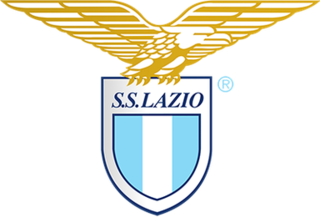
Società Sportiva Lazio Women 2015 a r.l. is an Italian women's football team representing professional male football club S.S. Lazio S.p.A.'s female's section. They currently play in Serie A Femminile.
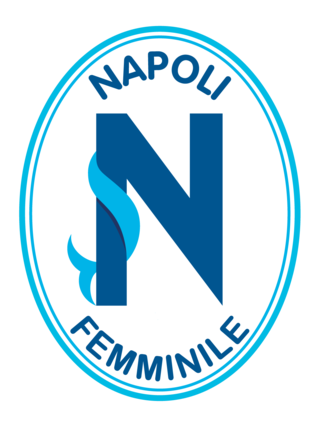
Società Sportiva Dilettantistica Napoli Femminile, known as Napoli Femminile or simply Napoli, is an Italian women's football club from Naples that competes in Serie A.
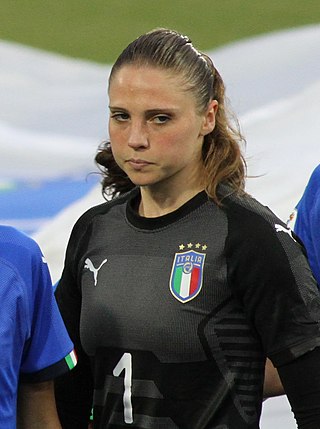
Laura Giuliani is an Italian professional footballer who plays as a goalkeeper for Serie A club AC Milan and the Italy national team.
The 2014–15 Serie A di calcio femminile was the 48th edition of the premier category of the Italian women's football championship. It ran from 4 October 2014 to 16 May 2015 and it was contested by fourteen teams. Verona won its fifth title, first since 2008-09. They finished the season one point ahead of Brescia. Both teams qualified for the 2015–16 UEFA Women's Champions League.

AFC Fiorentina, or simply Fiorentina, is an Italian women's association football club based in Florence, Italy and part of the professional football club ACF Fiorentina. The club was founded in 2015 when ACF Fiorentina acquired the Serie A license of the existing women's club A.C.F. Firenze. Upon its foundation, Fiorentina Women's FC became the first ever professionally affiliated women's football club in the history of Italy. The team competes in Serie A.

Moeka Minami is a Japanese professional footballer who plays as a defender for Italian Serie A club A.S. Roma and the Japan national team.

Valentina Giacinti is an Italian professional footballer who plays as forward for Serie A club A.S. Roma and the Italy women's national team.

Milena Bertolini is an Italian former footballer and manager who last coached the Italy women's national team. As the national team coach, she led Italy to qualify for the 2019 FIFA Women's World Cup following a twenty-year absence.

Regina Elena Baresi is a former Italian footballer who played as a striker.
Società Sportiva Dilettantistica Empoli Ladies FBC, known as Empoli Ladies or simply Empoli, is a women's football club based in Empoli, Tuscany, Italy. It was established in 2016 as the women's section of Empoli, following an acquisition of the sporting license of Castelfranco. Having debuted in the Serie B, the team first competed in the Serie A in 2017–18. They disbanded their senior team in 2022, and have only operated at youth level since.

San Marino Academy, or simply San Marino, is a football club based in the City of San Marino, San Marino, who play in the Italian football league system. The women's team made their debut in the Serie A, the top division of Italian women's football, in 2020–21.

The Serie B is the second division of women's football in Italy. Established in 1970, it has been run by the Italian Football Federation and currently features 16 teams. The team which finishes Serie B in the top position is promoted directly to the Serie A, the team in the second position enters a promotion/relegation playoff with the second to last placed Serie A team, while the bottom three are relegated directly to the Serie C. Since 2015 it has been decreed by the Italian Football Federation all male Serie B teams must provide women's teams also.
















